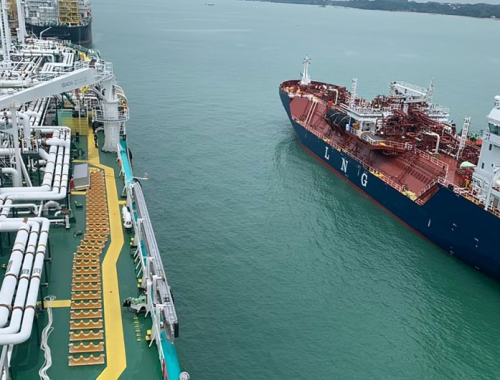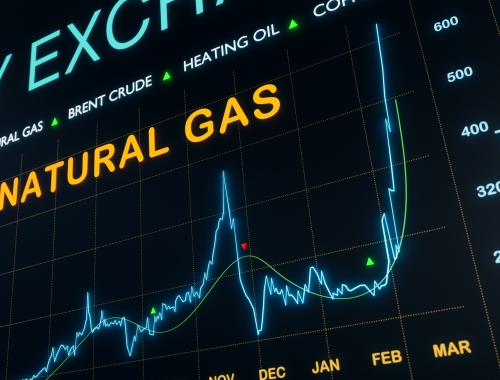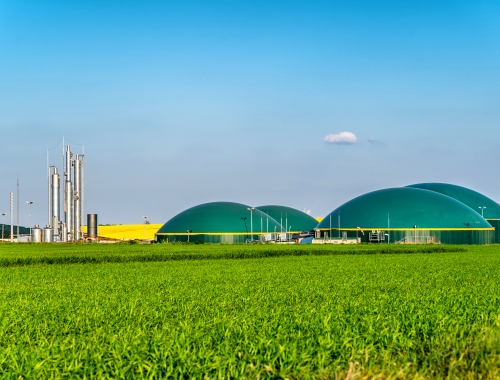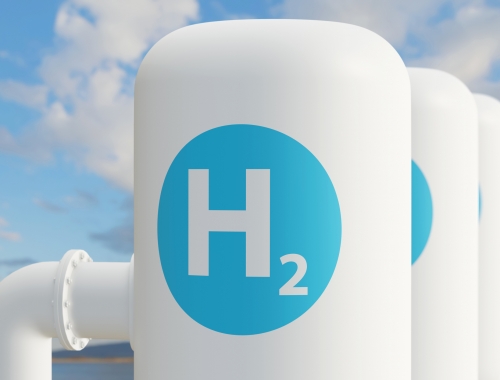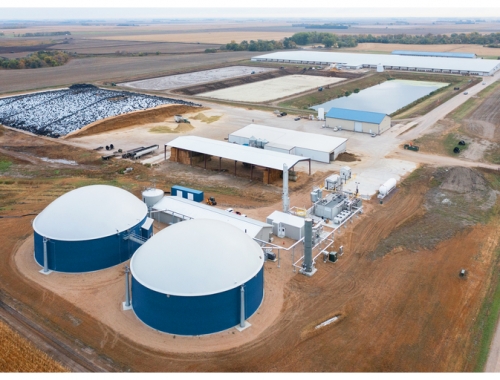RNG: An overnight sensation a decade in the making
SUMMARY
RNG has become an overnight darling of decarbonisation efforts, but at FortisBC, this “overnight sensation” has been more than a decade in the making. [Image credit: FortisBC]
By Dale LunanAs energy systems around the world search for decarbonisation initiatives that will eat into growing global CO2 and methane emissions, many natural gas distributors have turned their attention to renewable natural gas (RNG), most of which is derived from methane produced in landfills or extracted from animal waste in anaerobic digesters.
By injecting this RNG – some of which can actually yield “net negative” greenhouse gas emissions – they can lower the carbon footprint of their supply and avoid the production of fossil natural gas elsewhere in the value chain.
In Canada, FortisBC Energy (FortisBC), a subsidiary of Newfoundland & Labrador’s Fortis and the largest natural gas distributor in British Columbia, has become a leader in the RNG space. RNG already accounts for about 5% of its system supply, and current targets – of both the utility and the provincial government – are to have RNG and other low-carbon gases account for 15% of system supply by 2030, and 75% by 2050.
“What we’ve committed to is whatever will meet the government’s emission reduction targets,” Dave Bennett, the utility’s director of renewable gas and low carbon fuels, tells NGW in an interview. “The government has adopted a more ambitious reduction target of a 47% emissions cap on the natural gas sector – the amount of RNG we may need to meet that may actually be higher.”
Based on current targets, FortisBC anticipates having 31 PJ (about 29bn ft3) of RNG in its supply portfolio by 2030 – the 15% goal – and is already more than halfway there, Bennett said.
“We now have about 18 PJ under contract, although not all of that may eventually come online,” he said. “Last year, we had production of about 700,000 GJ and this year we expect to see that increase to 2 PJ.”
Expanding supply
Most of the RNG supply contracted by FortisBC comes from outside the province and doesn’t actually get consumed in BC. It’s injected into local distribution systems close to the source of the supply and FortisBC uses displacement accounting to include it in its RNG supply calculations.
“Biomethane is indistinguishable from fossil methane so it follows the same trading methods as any gas does,” Bennett says. “We track what is delivered on to the system and we take an equivalent amount of energy off the system at the delivery point.”
But FortisBC is also working to boost in-province RNG supplies. In June, the utility contracted with the Regional District of Fraser-Fort George in the first RNG project in the north part of the province and is working on another project on Vancouver Island. It also produces RNG from municipal wastewater treatment operations, including 60,000 GJ/year from Metro Vancouver's Lulu Island sewage treatment plant.
FortisBC’s use of RNG has risen exponentially in the last couple of years, but its efforts to bring renewables into its system supply date back more than a decade, to early discussions in 2008 with Metro Vancouver to capture methane from the city’s Lions Gate landfill.
“We had issued a request for non-binding expressions of interest even before the Metro Vancouver discussions, just as a way to garner interest and contacts, as the RNG industry in North America really was in its infancy,” Bennett explains.
The ‘Ah-hah’ moment
He and his team followed up with workshops, largely in the Lower Mainland area, where potential project developers, equipment suppliers and project financiers were brought together. One workshop, in Abbotsford, sowed the seeds for what is now known as Fraser Valley Biogas – the first to produce RNG for FortisBC after Metro Vancouver dropped discussions for the Lions Gate landfill project.
“I remember saying to one of my colleagues that RNG was expensive and I didn’t understand why people would pay more for something that was chemically the same as natural gas,” Bennett says of the thinking at FortisBC that led to its pursuit of RNG. “My ‘ah-hah moment’ was when he said, ‘don’t think of it as natural gas, think of it like electricity from wind or solar. It’s all electricity but some people will pay extra to put solar panels on their roofs.”
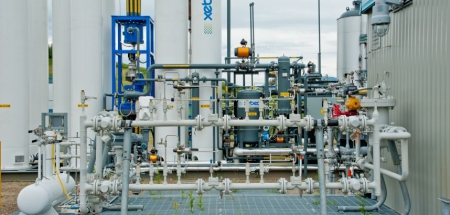
RNG piping at the Salmon Arm landfill. (Photo: FortisBC)
That “ah-hah moment”, he said, led to a customer survey to determine interest in RNG and ultimately to an application to the British Columbia Utilities Commission (BCUC) in June 2010 asking for approvals to move forward with RNG projects at Fraser Valley Biogas, which captures methane from agricultural waste, and the Salmon Arm landfill in central BC.
In December that year, the BCUC approved both projects, initially for a two-year test period. Today, more than a decade later, both are still operating and still producing RNG for blending into the FortisBC distribution system.
Milestones
In the years since that initial BCUC approval, FortisBC has logged several milestones in its RNG development work: the BCUC approved a permanent RNG program in 2013, prompting the utility to expand its RNG offering to more customers; in 2017, BC’s climate policy was updated to include a provision allowing up to 5% RNG blend in system supply; in 2020, FortisBC won BCUC approval for its first out-of-province supply, paving the way for expanded supply opportunities; and in 2021, the allowed blend of RNG was increased to 15% and FortisBC secured its first supply of RNG from the US.
Also in 2021, Fraser Valley Biogas was acquired by EverGen Infrastructure, a Vancouver-based recycler of organic waste, which is now in the process of doubling capacity to 160,000 GJ/year, all of which will also be injected into the FortisBC system. The expansion should be operational by early next year.
_f500x334_1669152286.jpg)
Fraser Valley Biogas facility. (Photo: FortisBC)
EverGen is also planning for RNG production at its Net Zero Waste Abbotsford composting and organic processing facility east of Vancouver, where a C$32mn capital investment to add anaerobic digestion capacity is being planned to produce 180,000 GJ/year of biogas, which will be upgraded to RNG for delivery to FortisBC under an existing 20-year offtake agreement.
The project was originally announced in early 2021 but has faced delays since then due to Covid restrictions and widespread flooding in the Lower Fraser Valley in late 2021. It’s back on track now and awaiting building permits and regulatory approvals.
“These upgrades, coupled with a new off-take contract that is in late-stage negotiations, will provide a significant uplift to EverGen’s RNG production capabilities to about 120,000 GJ/year, with the ramp-up to full capacity of about 160,000 GJ/year expected to begin in mid-2023, following amendments to existing permits,” EverGen told NGW in an email communication.
Other landfill biogas developments followed from the initial project at Salmon Arm. The Kelowna landfill in central BC began producing 60,000 GJ/year for FortisBC in 2012, while in the US, Archaea Energy produces RNG at several landfills, and earlier this year entered into a contract to provide up to 7.2mn mnBtu/year of RNG to FortisBC under displacement contracts.
The latest into FortisBC’s supply pipeline line is the Hartland landfill, operated by the Capital Regional District (CRD) near Victoria, on Vancouver Island. There, existing infrastructure that uses landfill gas to generate electricity – an inefficient use of the methane, due to energy losses – will be decommissioned and replaced by a new biogas upgrading facility designed, built and operated by Waga Energy.
The project is expected to reduce the capital region’s greenhouse gas (GHG) emissions by approximately 450,000 mt/yr of CO2 over the next 25 years.
And Metro Vancouver is back in the RNG from solid waste loop, this time at its 320-hectare landfill in the Vancouver suburb of Delta, where biomethane has been captured since 2020. Now, wells and piping are being installed that will allow that methane to be processed into RNG and sold to FortisBC.
It's a fitting milepost for RNG development discussions that began more than a decade ago at another Vancouver landfill but have since progressed to become an “overnight sensation” in BC’s decarbonisation efforts.
The latest in a continuing series featuring the work of Gas Pathways Platform participants in advancing natural gas innovation.


